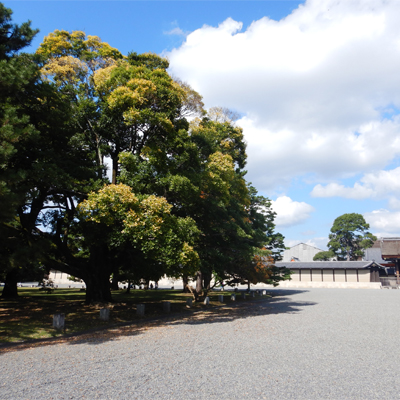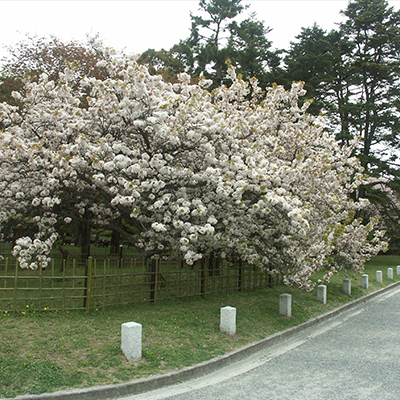See venerable trees of historical interest and feel their presence
The trees at Kyoto Gyoen include those with historical significance and links to residences of the imperial houses and high ranked court nobles. These trees were designated “trees of historical interest” in 1925. Since then, more trees have been added over time, and at present, 16 of the surviving trees (including successor trees) listed in “Trees of Historical Interest in Kyoto Gyoen (Ogawa Sannosuke)” in the magazine Kyoto Horticulture, Vol. 14 of 1955, are identified as “trees of historical interest.”
From these trees, one may imagine the preferences of the nobles who lived in the nobles’ residential area around the Imperial Palace, and what kind of residences they lived in. Some of the trees have signage explaining their unique origin and history. The trees of historical interest, together with other giant trees in the garden, form a vital component of Kyoto Gyoen’s unique landscape of giant trees and trees of historical interest.

Michelia compressa

Camphor tree inside Imadegawa Gate

Soapberry

Five pine

Ginkgo of the Osato Goten Palace

Muku tree (Aphananthe aspera) of the Omiya Residence

Kurokinoume plum tree

Red-bark oak (ichiigashi)

Pine tree of the Gyokado

Yellow catalpa

Muku tree (Aphananthe aspera) of the Shimizudani Residence

Pine tree of the Honami Residence

Japanese bird cherry (Prunus grayana)

Kuruma-gaeshi-zakura cherry

Chinaberry

Ginkgo of the residence of Rinkyuji Temple monks


